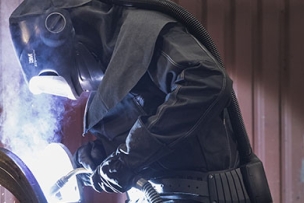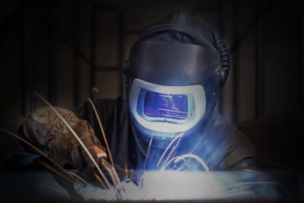Products that work as hard as you do. From the most basic to the most specialized needs, 3M offers the health and safety protection you and your workers need most, so everyone can perform at their best. We strive to deliver comfortable, well-designed personal protective equipment (PPE) that offers your workers the most effective protection available.
This blog article was originally published on the 3M Safety Now & Next blog on September 1, 2020 and can be viewed here. It is republished with permission.
As many countries around the world have begun to return to the workplace companies, including construction sites, may be considering additional requirements and reevaluating personal protective equipment (PPE) choices to help protect workers from SARS-CoV-2, the virus that causes COVID-19.
Per the U.S. Centers for Disease Control and Prevention (CDC) guidelines for construction, disinfection of reusable PPE is recommended at least at the beginning and end of each shift. Training should be provided to workers on cleaning PPE according to the manufacturer’s instructions. There is guidance available from the CDC for cleaning and disinfection practices in the workplace.
Reusable PPE Decontamination Guidance
3M provides the following documents on decontamination of reusable PPE:
- Reusable respirators: Cleaning and Disinfecting 3M Reusable Elastomeric Half and Full Facepiece Respirators following Potential Exposure to Coronaviruses
- Full face respirators: Cleaning and Disinfecting 3M™ Scott™ Reusable Full Facepiece Respirators Following Potential Exposure to Coronaviruses
- Powered air purifying respirators (PAPRs): Cleaning and Disinfecting 3M Powered Air Purifying Respirators Following Potential Exposure to Coronaviruses
- Fall protection equipment: Disinfecting Fall Protection Equipment – COVID-19 Concerns
- Head, eye and face protection: Cleaning and Disinfecting 3M™ Head, Eye and Face Protection Products Following Potential Exposure to Coronaviruses
- 3M™ PELTOR™ hearing protection: Cleaning and Disinfecting 3M™ PELTOR™ Protection & Communication Solutions Following Potential Exposure to Coronaviruses
Disposable/FFR Respirator Cleaning Guidance
Under no circumstances should an attempt be made to clean or wash a 3M filtering facepiece respirator (FFRs). 3M has investigated methods for healthcare facilities to decontaminate FFRs; however, these methods are likely challenging to adopt in most workplaces. While decontamination of filtering facepiece respirators such as N95s is not recommended, see the following 3M document for updated information:
Disinfectant Cleaning Options for Facilities/Job Sites
Additionally, the 3M Commercial Solutions Division can provide disinfectant cleaners that meet the U.S. Environmental Protection Agency’s (EPA) Emerging Pathogen Policy. These sanitizers may be considered for use against this coronavirus, which causes COVID-19 on non-critical, hard, non-porous surfaces that may be found in the workplace.
Employers should be aware that common sanitizers and disinfectants could contain hazardous chemicals. Where workers are exposed to hazardous chemicals, employers must comply with the U.S. Occupational Safety and Health Administration’s (OSHA) Hazard Communication standard (29 CFR 1910.1200) or other applicable regional/local regulations as well as Personal Protective Equipment standards (Ex. 29 CFR 1926 Subpart E in construction or 29 CFR 1910 Subpart I in general industry) and other applicable OSHA chemical standards. Employers should also consult OSHA’s Guidance on Preparing Workplaces for COVID-19 for more information.
3M also encourages you to check out their other blogs in this series, including general guidelines to help the construction industry safely return to work and how to help select PPE per recommended guidance from the CDC provided during this COVID-19 pandemic.
This blog article was originally published on the 3M Safety Now & Next blog. This article and more can be viewed at 3m.com/safetynow.








Talk to Us!
Leave a reply
Your email address will not be published. Required fields are marked *